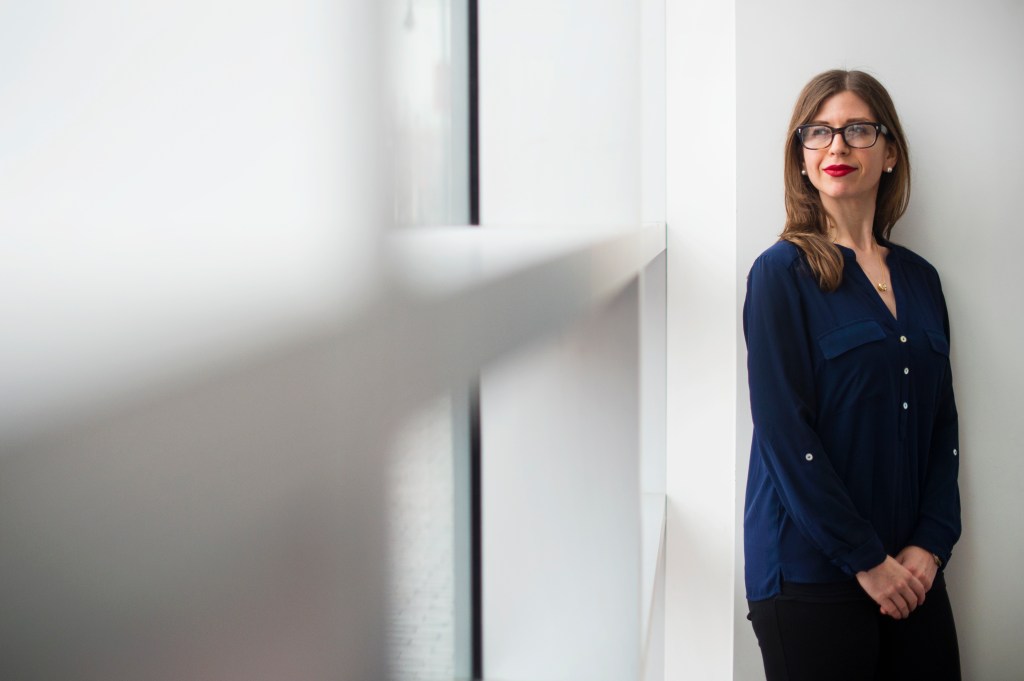Professor examines benefits, social inequalities of voice technologies

Technology is often heralded as a great equalizer for people with disabilities, especially those who have harnessed the power of synthetic voice software to offset their inability to speak to family, friends, and others.
But, says Meryl Alper, while these communication systems have incredible potential to support independence for people with disabilities, they remain subject to some of the same socioeconomic and social inequalities that govern society at large.
Alper, assistant professor of communication studies, makes that case in her new book, Giving Voice: Mobile Communication, Disability, and Inequality.

Alper says the technologies that are heralded as “giving voice to the voiceless” are subject to the same socioeconomic and social inequalities that govern society at large. Photo by Adam Glanzman/Northeastern University
“A lot of times, we’ll hear commercials or see headlines that talk about technology ‘giving voice to the voiceless,’” she said, “and there’s a multiplicity of meaning around ‘voice’ that they’re tapping into. As well as a literal sound, voice is agency, voice is representation.”
Alper said she sees broad territory to explore in the overlap between her research in communication studies, and the research in communication science, the likes of which are being conducted by Northeastern’s Rupal Patel, whose recent work focuses on customizing the synthetic voices available to those who use them.
For 16 months, Alper worked with 20 families with children ages 3 to 13 in the greater Los Angeles area. Each family had a child who was impaired in his or her ability to speak and used an iPad app that converted symbols to audible words to help the child communicate.
In Alper’s study, however, the participants obtained the tablet and the software in varied ways—some received it through a school program, while others purchased it themselves. The support families received beyond the physical hardware and software also varied.
Moira, one child with whom Alper spent time, received the iPad through a school program that provided children with a tablet for use both in class and at home. However, after a number of students’ tablets were damaged, the school changed its policy and allowed only in-school use of the tablets.
We have to keep voices attached to people.
Meryl Alper
Assistant professor of communication studies
Without the ability to use the tablet at home—and without the means to purchase an expensive piece of technology—Moira lost the ability to “speak” to her parents at home.
This, Alper said, is a prime example of how technology—the very same technology that gave Moira a ‘voice’—is still subject to the socioeconomic and bureaucratic inequities that are prevelant across our society.
“The school district’s pre-emptive measure was short-sighted, more focused on protecting the iPad in the short term than promoting Moira in the long term,” Alper wrote in her book, published by MIT Press.
“Technologies largely thought to universally empower the ‘voiceless’ are still subject to disempowering structural inequalities,” Alper wrote. “In short, physically handing someone a tablet that talks does not, in and of itself, give that person ‘a true voice.’”
“We have to keep voices attached to people,” she said.





